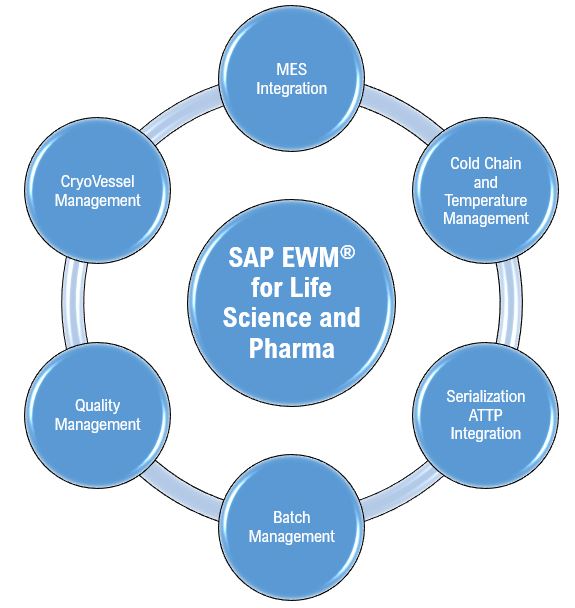1. Introduction: The Promise vs. the Reality
Artificial Intelligence (AI) has moved from research labs into boardrooms, becoming one of the most heavily funded areas of enterprise technology. It is widely viewed as a transformative force, capable of reshaping productivity, customer engagement, and operating models. Forecasts reinforce this optimism: IDC projects global generative AI spending will exceed $140 billion annually by 2028, while PwC estimates AI could contribute $15.7 trillion to global GDP by 2030. Adoption has accelerated accordingly. McKinsey’s 2024 Global AI Survey found that 65% of organizations use AI in at least one function, up from 50% in 2020. Generative AI has especially captured management attention, with pilots launched in marketing, customer service, IT, and supply chain planning.
Yet adoption has not translated into proportionate impact. Many AI initiatives remain in pilot stages, failing to deliver sustained commercial results. This mismatch between ambition and outcomes has led senior executives and boards to increasingly question the measurable value of their AI investments.
This blog examines that question. Drawing on 2025 findings from McKinsey, Infosys, KPMG, and other reputable sources, it explores why many projects stall, where AI is already producing reliable value, and how System Integrators (SIs) can help enterprises move from experimentation to impact.
2. The Reality Check: Adoption ≠ Impact
The optimism surrounding AI often obscures a difficult reality: impact remains limited compared with adoption. McKinsey’s State of AI 2025 report found that while 78% of organizations use AI in at least one business function, and 71% report generative AI use, over 80% say they are not seeing enterprise-level EBIT impact.
Other studies reach similar conclusions. Gartner has projected that nearly 30% of generative AI projects will be abandoned by 2025 post proof of concept, citing rising costs, weak data pipelines, and governance concerns. MIT Sloan researchers also caution that only a small share of pilots deliver measurable profit-and-loss impact, though exact percentages vary by source.
The challenges fall into four main categories:
- Data readiness issues, such as poor labelling and fragmented systems.
- Integration hurdles, with pilots built in isolation from workflows.
- Escalating costs once governance, retraining, and monitoring are added.
- Governance and compliance barriers, particularly in regulated sectors.
Yet the picture is not entirely negative. Gartner’s 2023 survey of 822 leaders reported average gains of ~15% in revenue uplift, ~15% in cost reduction, and ~23% in productivity for AI projects that reached scale. Similarly, McKinsey found consistent value in areas like customer service and supply chain, where AI was embedded into redesigned workflows.
Some analysts suggest the current imbalance should be seen as a learning curve. The proliferation of pilots, even those abandoned, is building enterprise capabilities in data stewardship and model governance that may enable stronger returns in the next three to five years.
3. Why Many AI Projects Stall
AI projects typically stall due to structural, not technical, reasons.
- Data lifecycle weaknesses: More than half of enterprises avoid use cases due to unreliable or inconsistent data.
- Workflow mismatches: McKinsey reports two-thirds of organizations scale fewer than 30% of pilots, as most are not designed for integration.
- Underestimated economics: Proof-of-concepts often ignore monitoring and compliance costs, rendering production uneconomic.
- Governance immaturity: Only about a quarter of executives report being well-prepared for AI risk.
- Ownership gaps: Few deployments are tied to line-of-business KPIs, and only 1% are described as “mature.”
- Talent shortages: 41% of stalled projects cite insufficient expertise in scaled deployment (MLOps, SRE, productization).
Observed remedies include:
- Requiring data contracts and lineage checks before model build.
- Running production-adjacent pilots instead of isolated PoCs.
- Embedding unit economics at PoC stage to ensure viability.
- Applying risk-by-design governance early.
- Assigning business sponsors with clear KPI accountability.
- Using hybrid staffing with vendor embeds and Centres of Excellence.
4. Where AI Creates Reliable Value Today
Although many organizations struggle to translate pilots into impact, there are clear domains where AI has consistently created measurable business value. McKinsey’s State of AI 2025 report confirmed that while 78% of firms use AI in at least one business function, only a smaller group has seen financial returns. Crucially, these returns are concentrated in specific, well-structured workflows where data is reliable, governance is embedded, and processes have been redesigned around AI.
- IT Operations And Cybersecurity have been among the most reliable value creators. AI-driven monitoring and anomaly detection tools now automate incident response and threat identification at scale. These applications succeed because they work with structured, high-frequency data and measurable KPIs such as mean time to detect (MTTD) and mean time to resolve (MTTR). Organizations report faster detection of intrusions and reduced downtime, creating tangible operational resilience benefits.
- Customer Service And Contact Centers represent another proven domain. Generative AI–enabled assistants can handle common queries, retrieve knowledge bases, and provide real-time scripting for human agents. McKinsey data shows that automation in these environments can lower service costs by up to 30%, while improving customer satisfaction through faster resolution. Importantly, the highest returns occur when AI is embedded into call-routing and CRM workflows, not deployed as standalone chatbots.
- Supply Chain Management has also demonstrated repeatable benefits. AI improves demand forecasting by identifying hidden patterns in historical sales, seasonality, and external variables. Several firms report 10–20% gains in forecast accuracy and 5–15% reductions in logistics costs when AI is linked to inventory and transportation systems. Success is highest when workflows are redesigned end-to-end, aligning forecasting, procurement, and distribution under unified AI-enabled platforms.
- Software Development has been one of the fastest-growing areas for generative AI adoption. Coding copilots and generative code assistants are now in mainstream use, with McKinsey reporting productivity improvements of up to 55% for developers using these tools. The gains are measurable in lines of code generated, reduced debugging cycles, and faster time-to-market. These applications succeed because they augment structured, rule-driven workflows where adoption barriers are low.
- Marketing And Sales also benefit, particularly in industries with large data volumes and measurable outcomes such as BFSI and retail. AI supports campaign optimization, content generation, and customer segmentation. Revenue uplifts of 5–10% have been reported where AI-driven targeting is embedded into CRM and campaign management systems. However, risks of brand safety and content quality remain high, making governance critical.
Beyond these domains, three common enablers of success emerge.
- Workflow redesign: only 21% of organizations report redesigning processes, yet those that do achieve stronger EBIT outcomes.
- Senior-level governance: McKinsey found that companies with CEO or board oversight (28% and 17% respectively) were more likely to report financial gains.
- Workforce readiness: Infosys reports have shown that structured training and adoption programs are strongly correlated with higher success rates.
Yet risks remain significant. McKinsey reports that 47% of firms experienced negative AI incidents in 2025, ranging from data leakage to model hallucinations. KPMG’s global trust study found 66% of employees admit to relying on AI outputs without validation, and 56% said errors had already impacted their work. Accenture also noted that many firms have paused AI projects mid-deployment to address risks, making “pause-and-fix” an increasingly common governance practice.
AI is delivering consistent, quantifiable value in domains with structured data and measurable KPIs, but broad-based EBIT impact remains elusive. Enterprises that achieve impact do so by redesigning workflows, embedding governance, and preparing their workforce. Without these enablers, pilots remain isolated experiments with limited business return.
5. The Role of System Integrators in Bridging the AI Value Gap
The limiting factor in AI adoption is not access to advanced models but the ability to orchestrate them into enterprise operations. Here, System Integrators (SIs) have a decisive role. Their work goes beyond technology implementation to encompass governance, workforce readiness, and domain-specific expertise.
- The Complexity Of Enterprise AI Adoption is a central challenge. While AI usage is widespread, fewer than 20% of organizations report enterprise-level financial gains. Most deployments stall when pilots cannot scale across fragmented systems. SIs provide the architectural expertise to integrate AI into legacy ERP, CRM, and SCM platforms, ensuring interoperability and sustainability. Without this, even successful pilots cannot deliver enterprise-wide results.
- Governance And Trust also remain significant barriers. Infosys’ Responsible AI research found that 95% of executives experienced at least one AI incident, and only 2% of organizations meet gold-standard Responsible AI benchmarks. KPMG similarly reported that 82% of leaders see risk management as their top challenge. SIs are stepping in to embed Responsible AI frameworks—bias detection, explainability, and compliance dashboards—into client deployments, reducing regulatory risk and enabling scale.
- Data Quality And Lifecycle Management present another recurring obstacle. KPMG’s 2025 survey revealed that 64% of leaders cite poor data quality as a barrier. SIs can address this by standardizing data architectures, deploying cross-functional data contracts, and setting up monitoring frameworks. By treating data pipelines as enterprise assets rather than project add-ons, they lay the foundation for scalable AI.
- The Workforce Dimension is equally critical. Infosys research shows that organizations investing in AI training and adoption pathways achieve materially better outcomes. SIs play a catalytic role here, enabling workforce upskilling, change management, and adoption playbooks that translate technical deployments into real productivity gains.
- Finally, SIs bring domain tailoring that accelerates maturity. KPMG has outlined how industries progress through stages of “Enable → Embed → Evolve”. Firms with vertical-specific templates, such as regulatory controls for BFSI or safety protocols for healthcare, move faster to the Embed stage. SIs with sectoral specializations can accelerate this journey by reusing proven frameworks.
Reported case outcomes:
- Infosys reported that a European bank reduced audit exceptions by 37% and halved approval times through Responsible AI frameworks.
- Accenture reported that a telecom operator cut customer query resolution time by 25% and raised agent productivity by 17% using generative AI assistants.
- KPMG reported that a North American healthcare provider cut clinical AI deployment delays by 30% through structured risk governance.
- Google Cloud highlighted 601 production use cases in April 2025, with one retail example showing 60–70% shorter content cycles after integration into ERP and e-commerce systems.
- An academic study (arXiv, 2025) showed that an insurer using LLMs for claims processing achieved higher throughput and fewer manual errors, but also uncovered new exception-handling needs.
Key insights across cases:
- Governance consistently accelerates adoption and reduces regulatory friction.
- Integration into enterprise systems is the strongest predictor of ROI.
- Pause-and-fix governance is now normalized as a way to reduce downstream risks.
- Workforce readiness multiplies the probability of success.
- Sector-specific accelerators shorten time-to-value.
System Integrators are no longer merely technology implementers—they are transformation partners. Their interventions—reported across banking, telecom, healthcare, and retail—illustrate how integration, governance, and workforce readiness turn isolated pilots into enterprise-scale outcomes.
6. Conclusion & Strategic Path Forward
The evidence from 2025 reports converges on a clear conclusion: AI adoption is nearly universal, yet measurable impact is still limited. The constraint is not technical sophistication but orchestration. Without workflow redesign, governance, and workforce readiness, AI projects remain pilots with little commercial value.
Three imperatives stand out for management teams:
- Rewire workflows, not just models. AI delivers its strongest returns when processes are redesigned around it. Customer service and supply chain are examples where end-to-end redesign translated into measurable gains.
- Embed governance and accountability early. With 47% of firms reporting AI-related incidents in 2025, Responsible AI cannot be an afterthought. McKinsey’s findings show stronger EBIT outcomes in firms where AI governance is led at CEO or board level.
- Invest in workforce readiness. Infosys data shows organizations with structured training and adoption planning achieve materially higher success. Without user adoption, technical success rarely delivers business value.
System Integrators will be decisive in operationalizing these imperatives. They act as architects of scale, ensuring pilots are integrated into enterprise systems with sustainable economics. They serve as custodians of trust, embedding bias detection, compliance, and security into every stage of deployment. And they operate as catalysts for adoption, aligning workforce readiness with business process transformation. Reported case studies across industries already show these interventions cutting delays, improving compliance, and accelerating time-to-value.
Looking ahead, AI efficacy may remain uneven in the near term, but the pathway to sustainable impact is now clearer. Enterprises that treat pilots as capability-building, embed governance into design, and invest in workforce adoption will be best positioned to capture measurable returns. Those that partner with System Integrators will accelerate this journey by leveraging proven frameworks and integration expertise.
The future of AI will not be decided by access to models but by disciplined orchestration. Enterprises that embrace this reality—supported by the structural strengths of System Integrators—will be the ones to convert AI ambition into measurable and enduring impact.
References
1. McKinsey & Company (2025). The State of AI: How organizations are rewiring to capture value. (“The state of AI – McKinsey & Company”) March 2025. https://www.mckinsey.com/~/media/mckinsey/business%20functions/quantumblack/our%20insights/the%20state%20of%20ai/2025/the-state-of-ai-how-organizations-are-rewiring-to-capture-value_final.pdf
2. Infosys (2025). AI Business Value Radar 2025.
https://www.infosys.com/iki/research/ai-business-value-radar2025.html
3. Infosys (2025). Responsible Enterprise AI Report 2025.
https://www.infosys.com/iki/research/responsible-enterprise-ai-agentic.html
4. KPMG (2025). Global AI Trust and Pulse Survey 2025.
https://kpmg.com/us/en/articles/2025/ai-quarterly-pulse-survey.html
5. KPMG (2025). Trust, Attitudes and Use of AI: Global Study.
https://kpmg.com/xx/en/our-insights/ai-and-technology/trust-attitudes-and-use-of-ai.html
6. IDC (2024). Worldwide Artificial Intelligence Spending Guide.
https://my.idc.com/getdoc.jsp?containerId=IDC_P33198
7. An MIT report that 95% of AI pilots fail spooked investors. But it’s the reason why those pilots failed that should make the C-suite anxious.
8. Accenture (2025). Tech Vision and Responsible AI publications (selected 2025 survey findings).
9. Google Cloud (2025). April 2025 Use Case Compendium – Production AI deployments.
https://cloud.google.com/transform/101-real-world-generative-ai-use-cases-from-industry-leaders
10. Academic Research (2025). arXiv Case Study: Object-Centric Process Mining with LLMs in Insurance.
https://arxiv.org/html/2504.17295v1










